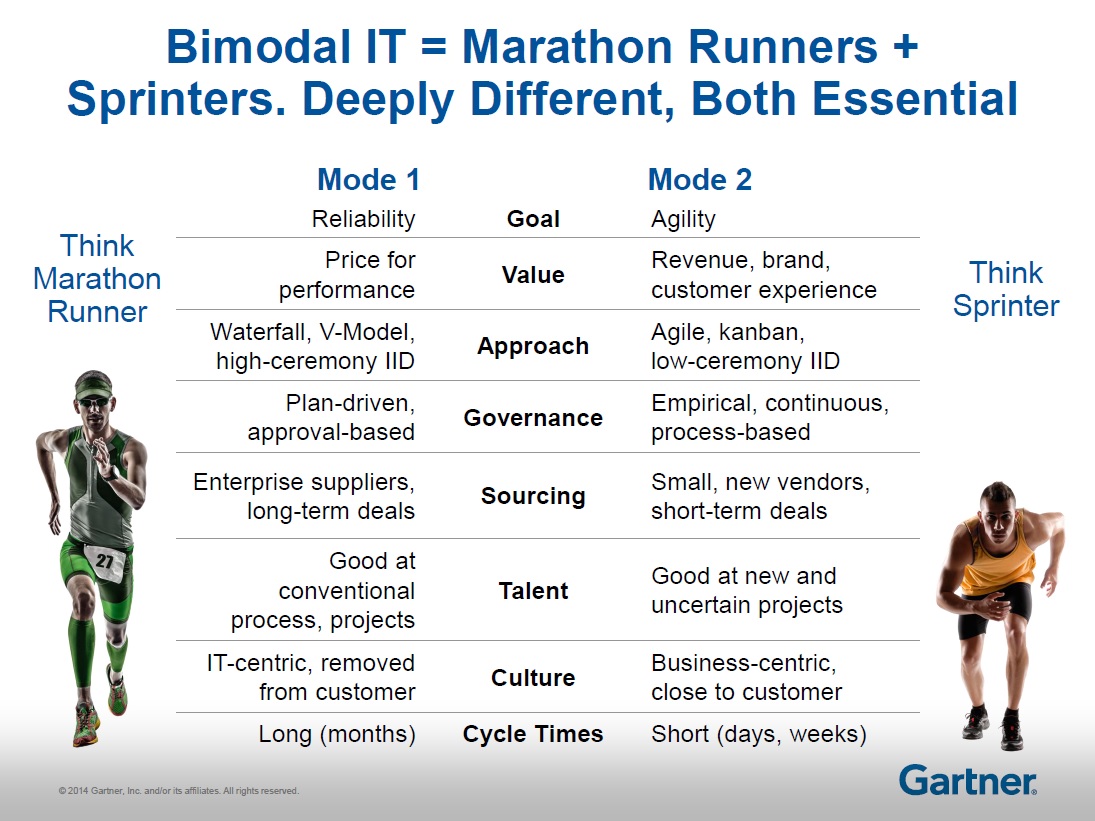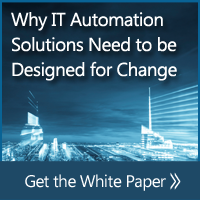Gartner’s Take on Workload Automation for Bimodal IT
Gartner's take on how the way businesses approach workload automation will have to change to meet the needs of Bimodal IT.

One of the key themes we’ve seen as we’ve attended Gartner events this year is the idea that we are now in the era of “bimodal IT”. With the expanding requirements business is imposing on IT, Gartner proposes that IT will have to undergo an organizational shift in order to be able to respond to this demand.

According to Gartner, bimodal IT refers to the organizational split in the way IT organizations will be structured. Mode 1, or traditional IT, is focused on reliability, safety, and approval-based governance. On the other hand, Mode 2 is an agile, non-traditional approach, which is centered on rapid, continuous development that doesn’t have to necessarily be perfect, but must be quick.
As a result, Gartner envisions organizations dividing IT departments in two teams: traditional and agile.
The traditional “Mode 1” team would continue performing the day to day work and long term plans that keep the business running while the agile “Mode 2” team would be focused on rolling out new technologies and updates in short bursts in order to reduce the organization’s overall time to market.
The shift required by bimodal IT has far-reaching implications and will necessitate big changes in the computing landscape and how I&O perform their day to day processes. Especially for readers of the IT Automation blog, you may be wondering how this impacts workload automation.
The Impact on Automation
Recently in June, Gartner published a new report, Mapping Workload Automation to IT Bimodal Needs, in which the research firm posits organizations will have to implement workload automation differently due to the demands of bimodal IT.
Organizations are facing a number of challenges with bimodal IT, particularly in the automation arena where most organizations have created siloed computing environments and islands of automation. In order to support the changing landscape of bimodal IT, Gartner says I&O leaders will need to implement end-to-end automation and plan for the continuous release of jobs into production in order to automate processes across heterogeneous systems as well as provide an application environment that is both reliable and agile.
Taking a Bimodal Approach to Automation
In order for I&O leaders to effectively address business demands with bimodal IT, a shift in automation strategy must occur. Gartner recommends taking a bimodal approach to workload automation, in which organizations continue to use current automation tools for mode 1 while planning for automation tool evolution in mode 2.
In Mode 1, organizations should consolidate to a single workload automation solution that can automate processes across the entire application landscape. In order to satisfy mode 1’s reliability and risk-averse needs, end-to-end automation is the primary goal.
In Mode 2, organizations should primarily focus on releasing jobs or tasks continuously into production, which bypasses the traditional change management process and creates slightly more risk, but it ultimately results in less slack time and delays.
Final Thoughts
In talking with customers, we see the “bimodal” shift is happening gradually as IT organizations designate different teams based on system maintenance versus business innovation.
With businesses starting to incorporate new technology trends like IoT and big data, IT organizations are dealing with more complexity from new and different applications that must be built into existing legacy systems and processes. In a recent blog post regarding the NYSE and United outages, we discussed this problem and how relying on custom scripting or outdated change management processes can result in technology mismatches that cause massive slow-downs and outages for the business.
In the coming years, it’ll be more about how these different teams work together to provide innovation that will drive the business further while managing the vast array of technologies and applications needed to keep the lights on.
Learn more about why IT organizations need to be designed for change in order to meet new business requirements by downloading the White Paper below:








